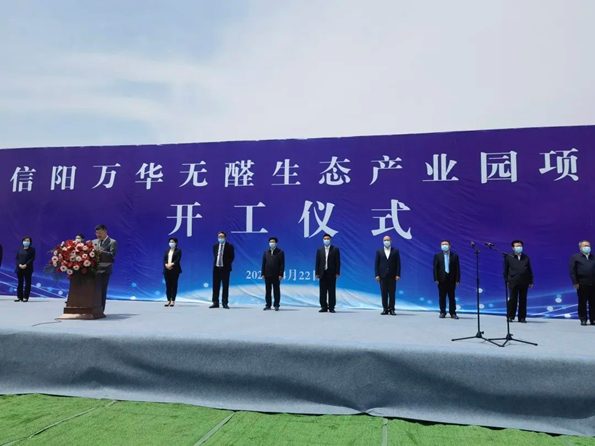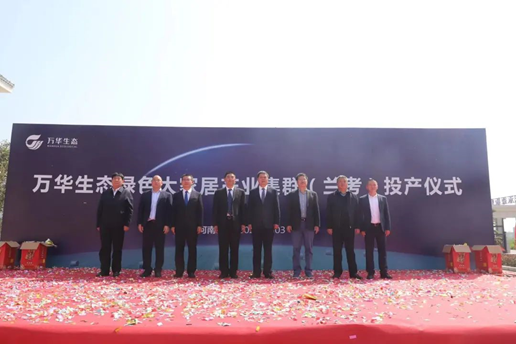Yesterday (April 26) was the eighth world Aldehyde-free day.

The proportion of formaldehyde-free wood-based panels has increased significantly
my country is the largest producer and consumer of wood-based panels in the world and import and export trading countries. The annual production and consumption of wood-based panels is about 300 million cubic meters. However, my country’s wood-based panel industry is facing problems such as high supply pressure of timber resources, serious environmental protection and safety production problems, low market concentration, irrational structure and fierce homogenization competition, and there is still huge room for improvement and upgrading.
With the continuous advancement of China’s supply-side structural reform, With the continuous improvement of environmental protection standards and increasingly strict supervision and supervision, my country’s wood-based panel industry is gradually turning to high-quality development from total expansion to structural optimization. In the past five years, my country’s wood-based panel industry has continued to eliminate backward production capacity, the level of intelligence in the entire production line has gradually increased, and the industry concentration has further increased; The proportion of low-formaldehyde-emitting products and formaldehyde-free wood-based panel products has increased significantly, and the variety structure has been continuously optimized.
From the subdivision structure of wood-based panels, the proportion of plywood The ratio is relatively highest, followed by fiberboard. These two types of boards can be further subdivided into formaldehyde-free boards according to the processing materials.
According to statistics from relevant domestic associations, by the end of 2021, plywood There are more than 12,550 manufacturers of similar products, distributed in 26 provinces and municipalities; the total production capacity is about 222 million cubic meters per year.
In terms of regions, there are 5 provinces, autonomous regions, The annual production capacity of plywood products in 5 cities exceeds 10 million cubic meters. There are more than 3,700 plywood manufacturers in Shandong Province, with a total production capacity of about 56.5 million cubic meters per year, accounting for 25.5% of the country’s total production capacity and continuing to rank first in the country. The number of plywood products enterprises in Linyi City has decreased slightly, but the production capacity has further increased to 39.8 million cubic meters per year, accounting for about 70.4% of the province’s total, maintaining its position as the largest production base of plywood products in Shandong Province and even the country.
At the beginning of 2022, there will be 2,400 plywood production enterprises under construction across the country Yujia, with a total production capacity of about 33.6 million cubic meters per year, except Beijing, Shanghai, Tianjin, Chongqing, Qinghai and Tibet Autonomous Region, the other 25 provinces and regions have plywood production enterprises under construction. It is estimated that the total production capacity of plywood products in China will be close to 230 million cubic meters per year by the end of 2022.
Leading enterprises are actively deploying and promoting formaldehyde-free artificial Board
In recent years, air pollution, energy consumption and other environmental pollution problems It has always been a key hot spot in China’s long-term development. Consumers are paying more and more attention to green and healthy product attributes and ecological consumption needs, which has prompted China’s home improvement industry chain to accelerate its development in a green and sustainable direction, and the wood-based panel industry is no exception. The board industry enterprises represented by Wanhua and Fenglin continue to carry out industry promotion and production layout in China.
- 4month26Day, Wanhua Chemical joined hands with Haitai Olin Group, Sunon Technology Co., Ltd., Aurora(China)Co., Ltd., Shanghai Xinguanmei Home Furnishing Co., Ltd. Ltd. , Guangzhou Baili Wenyi Industrial Co., Ltd. and Guangdong Zhongtai Furniture Group jointly proposed to promote the “formaldehyde-free” upgrade of the office furniture industry.
- 4month22On the 1st, Wanhua Ecological Group Xinyang Project Cooperation Signing Ceremony and Wanhua Formaldehyde-free Ecological Industrial Park Project Commencement Ceremony were held. The project is located in Weibei 1st Road, Xinyang International Home Furnishing Industry Town, covering an area of 800 mu, with a total investment of 2 billion yuan. 10 million square meters of decorative panel intelligent production line, annual production of 100,000 sets of Sikong new home decoration finishing center, and formaldehyde-free home decoration building materials auxiliary material production line.

- On April 3, Wanhua’s ecological green home furnishing industry The commencement ceremony of the cluster (Lankao) was grandly held in the Economic and Technological Development Zone of Lankao County, Kaifeng City, Henan Province. The industrial park has a production line of 250,000 m3 of aldehyde-free additive veneerable oriented strand board and a production line of 8 million square meters of veneer. Wanhua’s ecological formaldehyde-free additive veneerable oriented strand board is formed by one-time hot pressing, which has the advantages of green environmental protection, stable size, not easy to deform, strong surface decoration performance, excellent waterproof performance, and wide range of uses. It can be widely used in indoor furniture and building components. , construction formwork, container bottom plate, packing box plate, loading and unloading chassis, car compartment, etc., are the materials of choice for advanced custom furniture and door panels. It is reported that Wanhua Ecology has completed the construction and production of distributed green large home furnishing industrial clusters in Jingzhou and Jingmen of Hubei, Tongling and Bengbu of Anhui, Chenzhou of Hunan, Binzhou and Heze of Shandong, Zhumadian of Henan, and Shaoguan of Guangdong. It is expected that in the next 3-5 During the year, 21 industrial clusters will be established across the country.

- Fenglin Group:Feng Lin Group has been committed to the research and development, production and sales of safe, environmentally friendly and green wood-based panels. It has mature production technology of formaldehyde-free wood-based panels. In 2021, Fenglin Group will actively promote the construction of the first phase project of Qinzhou Fenglin Wood Processing Industrial Park “Fenglin annual output 500,000 cubic meters of super strong particleboard project”. At the same time, according to the company’s port-side timber processing strategy and business development needs, the company held the tenth meeting of the fifth board of directors, and planned to invest in the construction of Fenglin timber industry production base in Wujia Industrial Park, Hepu Industrial Park, Beihai, Guangxi, and terminate the “New Zealand Kyrgyzstan Sporn’s annual production of 400,000 cubic meters of veneerable oriented particle board project “will change all the raised funds to the first phase project of Fenglin Timber Industry Production Base – annual production of 500,000 cubic meters of super-strength particleboard production line. It is estimated that by 2025 , the company’s total wood-based panel production capacity will reach 2.55 million cubic meters per year (including projects under construction in Qinzhou), which is nearly double the current production capacity of 1.3 million cubic meters per year.
There is broad room for development in the formaldehyde-free wood-based panel market
Although the industry generally recognizes the environmental protection and health of formaldehyde-free wood-based panels However, there are still bottlenecks in the application and promotion of dealdehyde. From the statistical data, the current production of formaldehyde-free particleboard accounts for 6% of all particleboards, and the production of formaldehyde-free fiberboard accounts for 2% of all fiberboards. It can be seen that with the continuous development of technology, there is still broad room for development of domestic formaldehyde-free wood-based panels.


